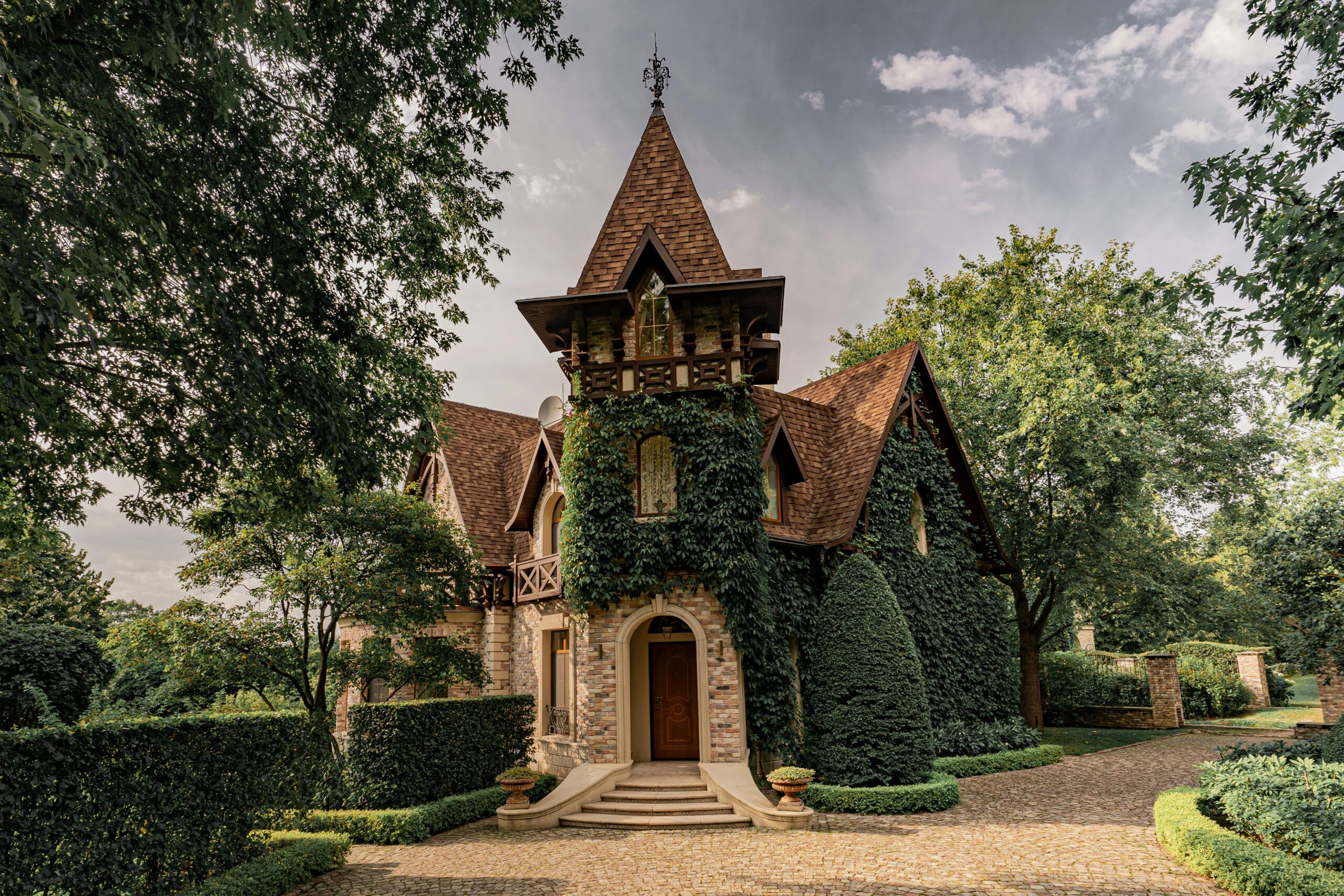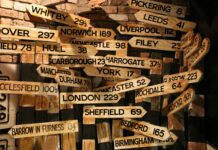Nestled in the heart of South Yorkshire, Sheffield Manor is a captivating historical treasure that many have yet to discover. Have you ever wondered what secrets lie within the ruins of one of England’s most intriguing medieval manors? This remarkable site offers a unique glimpse into the past, where history comes alive through its crumbling walls and sprawling grounds. Known for its rich heritage and stunning architecture, Sheffield Manor history is a must-explore for history enthusiasts and curious travellers alike. But what makes this hidden gem in Sheffield stand out from other historical landmarks? The manor isn’t just an ancient ruin; it’s a portal to stories of nobility, mystery, and even royal intrigue. Visitors often ask, “What can I expect when visiting Sheffield Manor?” From guided tours to special events, there’s always something exciting happening here. Moreover, the surrounding natural beauty and peaceful setting make it an ideal spot for photography and leisurely walks. If you’re searching for an unforgettable day out steeped in culture, don’t miss the chance to delve into the fascinating world of Sheffield Manor tours and uncover its many secrets. Ready to step back in time and explore one of Sheffield’s best-kept secrets?
Discover Sheffield Manor’s Hidden History: 7 Fascinating Facts You Never Knew
Sheffield Manor: A Quirky Look Into Its History and Charm
If you ever find yourself wandering around South Yorkshire, you might stumble upon the intriguing spot called Sheffield manor historical site. Not really sure why this matters, but Sheffield Manor has got some stories that could keep you up at night—well, maybe not exactly, but you get the idea. The manor is more than just old bricks and mortar; it’s a window into England’s past, with all the drama, mystery and a few ghosts thrown in for good measure.
A Bit About Sheffield Manor’s Background
The history of Sheffield manor estate dates back to the Tudor period, which is quite a long time ago. It was once the residence of the Earl of Shreffield, a title that sounds fancy but honestly, could be confusing if you mix it up with the city itself (which people sometimes do, believe it or not). The manor was built in the 16th century, and it’s one of them places where you can almost hear the echoes of olden days. Or maybe that’s just the wind, who knows?
| Year | Event |
|---|---|
| 1516 | Sheffield Manor was constructed |
| 1547 | The Earl of Shreffield took residence |
| 1642-1651 | English Civil War impacted the estate |
| 19th Century | Manor fell into disrepair before restoration |
The architecture is something that really sticks out when you visit. You’ve got these Tudor beams, old stone walls and windows that look like they been smashed by a few storms over the centuries. It’s not your usual shiny palace, but that’s what makes it charming, innit? The rough edges tells a story of survival and time passing by.
Why People Should Visit Sheffield Manor?
Maybe it’s just me, but I feel like places like Sheffield manor ruins tour are perfect for history buffs and those who just want to escape the hustle and bustle of modern life. It’s quiet, kind of eerie at times, and you can imagine living in a time when there was no mobile phone signal—terrifying, right? What’s more, the manor is surrounded by lovely gardens and walking trails, which makes it a nice spot for picnics or a lazy Sunday stroll.
Here’s a quick rundown of what to expect if you do decide to go:
- Guided tours available on weekends and bank holidays
- On-site cafe serving traditional English tea and cakes (the scones are alright, not too shabby)
- Interactive history exhibits for kids and adults alike
- Special events like medieval fairs and ghost walks held throughout the year
A Few Things That Might Confuse You
One thing that threw me off was the naming. Sometimes people calls it Sheffield Manor Lodge or Sheffield Manor Park, which can be confusing if you’re trying to find it on a map. Also, the ruins themselves aren’t fully intact, so if you expecting a castle, you’ll be a bit disappointed. But then again, that’s part of the charm, isn’t it? The mix of old and new, ruins and restoration.
| Aspect | Detail | Notes |
|---|---|---|
| Location | Sheffield, South Yorkshire | Easily reachable by car or public transport |
| Accessibility | Moderate (some uneven ground) | Not suitable for wheelchair users |
| Entry Fee | £5 for adults, free for children under 12 | Reasonably priced |
| Best Visiting Months | April to October | Avoid winter unless you like the cold |
There’s also a bit of a legend about a “White Lady” ghost roaming the grounds, but honestly, I think that’s just good marketing. Ghost tours are always popular, and Sheffield Manor isn’t no exception. If you’re into that kind of spooky stuff, you might want to check out the sheffield manor ghost stories on their website before you visit.
Practical Tips For Your Visit To Sheffield Manor
If you planning a trip, here’s some tips that might save you a headache:
- Book your tickets online beforehand – weekends get really busy, especially during events.
- Wear comfy shoes – the terrain can be rough and slippery if it’s been raining (which it probably has).
- Bring a camera – there are some cracking photo opportunities, even if the weather is dull.
- Check the event calendar – you might catch a medieval fair or a re-enactment.
- Don’t expect modern facilities – toilets are basic, and mobile signal can be patchy.
A Simple Comparison Table: Sheffield Manor vs. Other Historic Sites
| Feature | Sheffield Manor | Chatsworth House | Wentworth Woodhouse |
|---|
Why Sheffield Manor Is the Ultimate Secret Getaway for History Lovers in 2024
Sheffield Manor: A Quirky Dive into History and Charm
If you ever find yourself wandering around Yorkshire, you might wanna check out Sheffield manor historical significance — even if its not the most glamorous spot, it’s got stories that’ll make you go “hmm, didn’t know that”. Sheffield Manor, or sometimes called Sheffield Manor Lodge, is a fascinating old place that’s got more history than you probably expect, although some might say it’s just a pile of crumbling bricks.
What’s Sheffield Manor All About?
So, Sheffield Manor was originally built in the 16th century — yeah, that old! It was a grand country house for the Earls of Shrewsbury. The thing is, it’s not exactly standing proud these days, more like a romantic ruin. But to be honest, ruins have their own kind of charm, right? Not really sure why this matters, but it’s said that Mary, Queen of Scots, was imprisoned there for a while. That’s a bit of a big deal, if you ask me.
Here’s a quick rundown of some key facts about sheffield manor lodge history:
| Fact | Details |
|---|---|
| Built | Early 1500s |
| Original Owner | Earl of Shrewsbury |
| Historical Significance | Mary, Queen of Scots’ imprisonment site |
| Current State | Ruins, partially restored |
| Location | Sheffield, South Yorkshire |
Not all manors have a rockstar guest like Mary, Queen of Scots, so maybe Sheffield Manor’s got bragging rights after all.
Why Should You Care About Sheffield Manor?
Maybe it’s just me, but I always think places with a bit of mystery and history are worth a visit. The sheffield manor tourist attractions may not be as flashy as some castles or palaces, but there’s something about walking through old stone walls and imagining the past. Plus, it’s surrounded by pretty parklands and nature, so you can get that fresh air and a bit of peace.
If you’re thinking about visiting, here’s a little checklist that might help:
- Bring comfy shoes (the terrain is bit uneven)
- Don’t expect a fully restored palace; it’s more like a historic ruin
- Check local opening times (sometimes it’s closed for maintenance)
- Take a camera, because the views are quite nice
- Maybe pack a picnic to enjoy in the nearby park
Not trying to sound like a guidebook, but it’s good to be prepared, especially if you’re planning a day out with family or mates.
Sheffield Manor’s Role in Local Culture and Events
One thing that surprised me was that sheffield manor community events are sometimes held on site. Yep, they do stuff like historical reenactments, art exhibitions and even outdoor theatre. It’s a bit odd seeing actors dressed in Tudor costumes wandering around ruins, but it adds to the atmosphere. I guess it’s better than letting the place just gather dust and cobwebs.
Here’s a small list of common events you might catch:
- Tudor-themed fairs
- Local history talks
- Outdoor concerts during summer
- Educational school trips
- Seasonal open days with guided tours
All in all, it’s a way for locals to keep the history alive and make the manor a bit more than just old stones. Whether you’re a history buff or just someone who likes quirky things, there’s usually something happening.
Practical Insights: How to Get the Most Out of Your Visit to Sheffield Manor
If you want to make your visit to sheffield manor visitor information smoother, here’s some tips that I wish I knew earlier:
| Tip | Reason |
|---|---|
| Visit on a weekday | Less crowded, more peaceful |
| Use public transport | Parking can be tricky near the manor |
| Bring a guidebook or app | Helps understand what you’re looking at |
| Wear weather-appropriate clothes | The site is outdoors and can be muddy |
| Combine visit with nearby attractions | Sheffield Botanical Gardens is close by |
Honestly, it’s not just about seeing the ruins but soaking in the vibe of the place.
What About The Architecture?
The architecture at Sheffield Manor is a bit of a mixed bag, mostly because it’s been through a lot over the centuries. Originally, it was a Tudor-style manor house with grand halls and chambers, but now you’ll mostly see the remains of walls and foundations. Some parts have been restored to give visitors a glimpse of what it might have looked like.
Below is a simplified breakdown of architectural elements you might notice:
| Architectural Feature | Description |
|---|---|
| Stone walls | Thick and partly ruined |
| Tudor windows | Some restored, others just gaps |
Unlock the Enchanting Charm of Sheffield Manor: Top 5 Must-See Attractions
Sheffield Manor: A Quirky Dive into History and Charm
If you ever find yourself wandering around South Yorkshire, you can’t just skip Sheffield Manor. It’s one of those hidden gems, you know? Not a lot of people talk about it, but it’s packed with stories and a certain charm that’s hard to put down. Maybe it’s just me, but I feel like the Sheffield manor history and secrets are what really make this place stand out. You might wonder, why bother with an old manor when there’s so much shiny stuff around? Well, lemme tell you, there’s more to this place than meets the eye.
The manor itself, built in the 15th century, is a classic example of medieval architecture — or at least that’s what the guidebook says, though some parts look like they could fall apart any second. The old stone walls have seen better days, but they quietly tell tales of the past. And no, that doesn’t mean there’s a ghost waiting to jump out at you, although some visitors might argue otherwise.
What’s interesting about visiting Sheffield manor ruins is not just the structure, but the stories behind it. The manor was once home to the lords of Sheffield, a family who seemed to have a knack for drama and politics. You’ll find plaques scattered about, trying to explain who did what and when, but honestly, it’s all a bit confusing if you haven’t brushed up on your British history recently.
Here’s a quick table to help you get the gist of the important events related to Sheffield Manor:
| Year | Event | Why it’s kinda important |
|---|---|---|
| 1480s | Manor built | Showed off wealth and power |
| 1570s | Lady Anne visits | Added some royal sparkle to the place |
| 1640s | Civil War damage | Manor took a beating |
| 1800s | Partial restoration | Tried to save what was left |
| Present | Tourist spot and historic site | People come to soak in the old vibes |
Not really sure why this matters, but the fact that Lady Anne (yes, that Anne) stayed here adds a bit of royal flair to the manor’s story. It kinda makes you imagine her wandering those halls in her fancy frock, probably complaining about something trivial like the lack of good tea or the drafty windows.
If you’re planning a visit, here’s a little checklist to keep in mind:
- Wear comfy shoes — the ground is uneven and can be muddy.
- Bring a camera — there’s a lot of photogenic spots, if you like old stones and ivy.
- Don’t expect a full museum experience — it’s more of a “wander and wonder” kind of place.
- Check the weather — it’s mostly outdoors and the English rain doesn’t care about your plans.
One of the quirkiest facts about exploring Sheffield manor grounds is that the gardens around it aren’t really gardens anymore. They’re more like wild patches of greenery where rabbits and birds have taken over. It’s kinda charming in a “nature reclaiming history” way, but don’t go expecting manicured lawns.
Here’s a little list of the things you might spot on your stroll around the manor:
- Old stone walls with moss growing on them
- Crumbled archways that hint at what used to be
- Occasional signage that’s a bit faded and hard to read
- Loads of wild flowers, especially in spring
- A surprising number of squirrels doing whatever squirrels do
The Sheffield manor visitor tips often mention that the place is great for history buffs, photographers, and anyone who loves a bit of mystery. Me? I just like imagining the people who lived there centuries ago, probably arguing about who left the door open or how to handle the latest crop failures. History ain’t all boring dates and names, after all.
And here’s a quick FAQ for those who might be curious:
Q: Can you go inside Sheffield Manor?
A: Not really, most of it is ruins and unsafe to enter. You can walk around the grounds though.
Q: Is there an entry fee?
A: Nope, it’s free! Though donations are welcomed if you want to support maintenance.
Q: Are there guided tours?
A: Sometimes, but mostly it’s self-guided, so bring your own info or download a guide app.
Q: What’s the best time to visit?
A: Spring and summer, definitely. It gets muddy and cold in winter.
Honestly, if you’re looking for a bit of old-school England with a dash of mystery, Sheffield Manor is a cracking spot. It’s not polished or perfect, but maybe that’s the point. The imperfect stones and the
How to Explore Sheffield Manor’s Mysteries: Insider Tips for an Unforgettable Visit
Sheffield Manor: A Quirky Dive into History’s Nooks and Crannys
If you ever find yourself wandering around South Yorkshire, you might stumble upon something called Sheffield Manor historical site. Now, it ain’t your usual tourist trap with flashy signs and over-priced souvenirs, but it’s got this weird charm that kinda pulls you in — even if you’re not really into dusty old ruins or whatever.
To be honest, the story of Sheffield Manor ruins is a bit of a mixed bag. It was originally built back in the 16th century by the Earl of Shrewsbury, but the thing is, it never really reached its heyday like some other castles or manors do. Instead, it sorta sat there, falling apart slowly. Not really sure why this matters, but this place is famously linked to Mary, Queen of Scots, who stayed there under house arrest. Yeah, sounds dull, right? But there’s something oddly fascinating about a place where royals were basically stuck, watching the world go by.
Quick Facts about Sheffield Manor:
| Feature | Details |
|---|---|
| Location | Sheffield, South Yorkshire |
| Built | 16th century |
| Historical Resident | Mary, Queen of Scots |
| Status | Ruin |
| Visitor Facilities | Limited, mostly outdoors |
Honestly, the site isn’t like your typical well-maintained castle with guided tours and cafes — it’s more like a giant open-air museum with bits of walls and foundations scattered around. You gotta use your imagination to picture what it once was. Maybe it’s just me, but I feel like places like this have more soul than those pristine tourist spots.
Why would someone even bother visiting Sheffield Manor archaeological site? Well, for starters, if you’re into history (or just fancy a nice walk through somewhat mysterious ruins), it’s a decent spot. Plus, it’s free! You don’t need to fork out loads of cash like at other attractions. And if you’re the kind of person who likes to snap photos of creepy old buildings or ruins covered in ivy, this place is a goldmine.
Okay, so here’s a rough list of what to expect when you visit:
- Crumbling stone walls and foundations
- Lots of greenery and open space
- Occasional signs with historical bits (sometimes hard to read)
- A chance to imagine royal secrets and plots (if you’re creative enough)
- No gift shops, no cafes, no fancy restrooms (so pack your own snacks and water!)
One thing that always gets me is how places like Sheffield Manor estate history remind us how fragile history can be. All these grand plans for manors and castles, and now it’s just a few stones on the ground. Kinda humbling, isn’t it?
Here’s a quick comparison to give you some perspective on how Sheffield Manor stacks up against a more famous castle nearby:
| Feature | Sheffield Manor | Conisbrough Castle |
|---|---|---|
| Condition | Mostly ruins, foundations only | Well-preserved with towers and walls |
| Tourist Facilities | Minimal, basic signage | Guided tours, café, gift shop |
| Historical Significance | House arrest of Mary, Queen of Scots | Norman stronghold, medieval history |
| Accessibility | Easy, open grounds | Paid entry, paths and stairs |
Like, if you’re asking me which one to visit, I’d say both got their own vibe. Conisbrough is flashy and polished, while Sheffield Manor feels like you’re stepping back in time without the crowds. But fair warning, don’t expect posh experiences here.
Another quirky thing about Sheffield Manor tourism is that most people don’t even know it’s a thing. It’s like this hidden gem, but also kinda forgotten. You’ll probably see more dog walkers and local kids than actual tourists. Sometimes, that’s the appeal though, right? Less hustle and bustle, more peace and quiet.
If you’re thinking of going, here’s a little practical info to keep in mind:
| Tips for Visiting Sheffield Manor |
|---|
| Wear comfy shoes, the terrain can be uneven |
| Bring your own refreshments |
| Visit in daylight to appreciate the ruins better |
| Don’t expect much in terms of facilities |
| Combine visit with nearby attractions (like parks or museums) |
Now, if you really want to geek out, there’s some fascinating archaeology happening around the site. Local groups have been digging up artefacts and trying to piece together more about daily life in the manor back in the day. Not that I’m some archaeology nerd, but it’s pretty cool to think about what they might find next. Could be anything from old pottery shards to bits of jewellery.
The Untold Stories of Sheffield Manor: What Makes This Hidden Gem Truly Unique
Sheffield Manor: A Quirky Glimpse into History You Didn’t Know You Needed
So, there’s this place called Sheffield Manor that’s been hanging about for centuries, and honestly, it’s not what you’d expect from your usual historic sites. I mean, you might think it’s just some posh old building with not much going on, but oh, it’s way more interesting than that. Not really sure why this matters, but the Sheffield Manor historical ruins have got some proper stories to tell, even if they look like they’ve been through a blender.
Let’s start with the basics. The manor was built sometime in the late medieval period, around the 15th century, but it’s had a tough life – think wars, neglects, and a few dodgy owners who probably couldn’t care less about preserving anything. It was originally home to the Earls of Shrewsbury, which sounds super fancy, right? But the manor itself was more like a fortified house than a palace, so don’t expect gold-plated walls or anything daft like that.
Some quirky facts about Sheffield Manor estate you may not know:
| Fact | Details |
|---|---|
| Built | 1460s |
| Original owners | Earls of Shrewsbury |
| Current state | Ruins, but open to public visits |
| Notable events | Used during English Civil War |
| Restoration efforts | Started in the 20th century, ongoing |
The ruins are a bit of a mess, I won’t lie. Stones are scattered everywhere, and some walls are barely standing. But that’s part of its charm, I guess. Maybe it’s just me, but I feel like ruins have this weird beauty in their imperfection. Plus, the place is surrounded by lovely woodland – perfect for a bit of late afternoon wandering or just pretending you’re in some old fantasy film.
Now, if you’re wondering why anyone would bother visiting a place that’s basically a pile of rocks, good question. The thing is, Sheffield Manor heritage site offers more than just crumbling walls. There’s a small museum on-site that’s packed with artifacts found during excavations, like pottery shards, old coins, and even bits of clothing. It’s like a puzzle of the past that you can almost piece together, if you squint hard enough.
Here’s a quick list of must-sees when you’re there:
- The remains of the great hall, which was the social hub back in the day.
- The chapel ruins, where the lords probably prayed for better luck.
- The defensive walls, giving you a sense of how people used to guard themselves against invaders.
- The exhibition room, with the quirky artefacts and some cheeky info boards.
One thing that really stood out to me was the story of Mary, Queen of Scots. Yeah, that Mary. She was held prisoner at Sheffield Manor during the 16th century, which adds a bit of royal drama to the mix. Apparently, her time here was quite uneasy – no royal treatment, just cold stone walls and strict guards. It’s funny to think such a famous lady was stuck in this rather ordinary place.
If you’re planning a visit, here’s a little cheat sheet about when and how to get the most out of it:
| Tip | Details |
|---|---|
| Best season to visit | Spring or Autumn for the best weather and colours |
| Guided tours availability | Weekends and bank holidays, book in advance |
| Facilities | Small café on-site, toilets available |
| Accessibility | Some uneven ground, not ideal for wheelchairs |
| Entry fee | Modest charge, supports restoration efforts |
Don’t expect it to be all glam and glitz. The paths can be muddy, the signposts a bit confusing, and sometimes the wind sounds like it’s whispering ghost stories (maybe it’s just me, but I swear I heard a creak or two). But that’s kinda the point, isn’t it? You get to walk through history, a bit rough around the edges, and imagine what life was like hundreds of years ago.
What I found a bit annoying though was the lack of detailed info on some parts of the ruins. You sometimes get these vague signs that say “Old wall” or “Site of kitchen,” which doesn’t exactly spark the imagination. I mean, come on, a bit more storytelling wouldn’t hurt! Perhaps they’re saving the best for a future upgrade, but until then, you’ll need to bring your own imagination… or just Google it later.
Speaking of which, if you’re a history buff, a visit to Sheffield Manor castle ruins should definitely be on your list. Even
Conclusion
In conclusion, Sheffield Manor stands as a remarkable testament to the city’s rich history and architectural heritage. From its origins as a medieval hunting lodge to its transformation into a grand Tudor residence, the manor encapsulates centuries of evolving design and social significance. Visitors today can explore the evocative ruins, immerse themselves in local folklore, and appreciate the surrounding parkland that complements the site’s historic charm. As Sheffield continues to grow as a vibrant urban centre, preserving landmarks like Sheffield Manor is essential to maintaining a tangible connection to the past. Whether you are a history enthusiast, an architecture lover, or simply looking for a peaceful retreat, Sheffield Manor offers a unique glimpse into the region’s cultural legacy. We encourage you to visit and support ongoing conservation efforts, ensuring that future generations can enjoy and learn from this captivating piece of Sheffield’s story.













